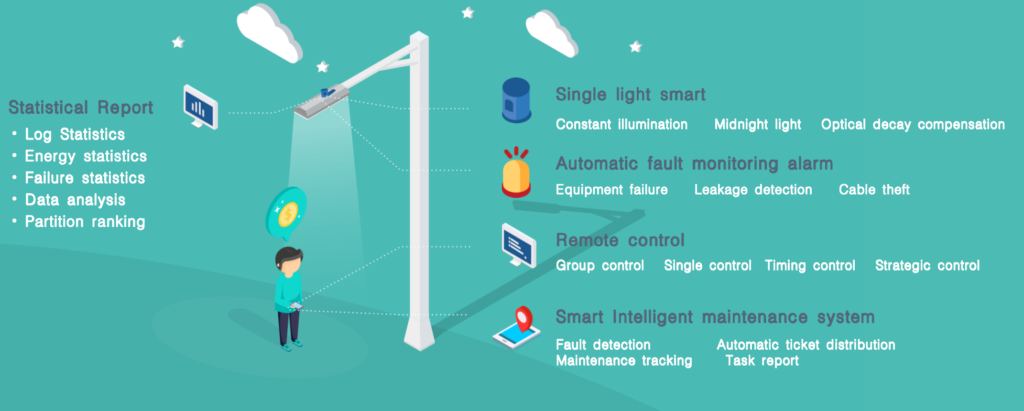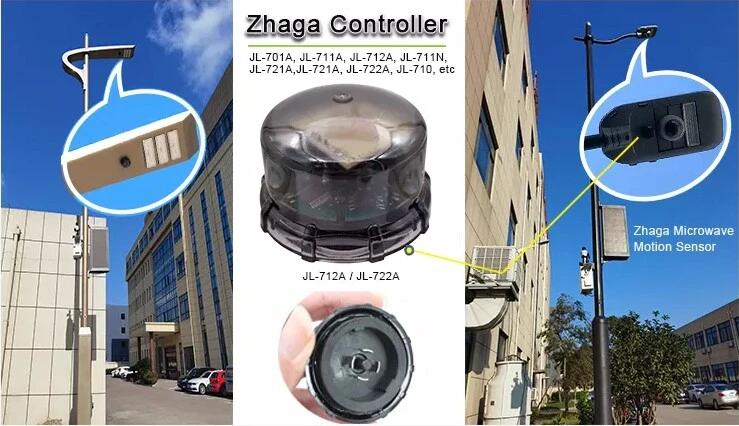Outline
- Introduction
- How Is Dubai Updating Its Street Lighting?
- Can LED Technology with Smart Photocell Help Sustainability and Energy Consumption Reduction?
- How IoT Technology Facilitates The Integration Of Smart Lighting With Other Building Management Systems?
- What Is Big Data? How AI And Big Data Help With Optimizing Lighting Control Strategies?
- What Is The Role Of Wireless Technology and Cloud Platforms In Smart Lighting Management?
- What Are the Benefits of Integrating Smart Lighting with Security Systems?
- How Can Smart Lighting Enhance Accessibility for Disabled Groups?
- Why Are Customized Smart Lighting Solutions Vital for the Middle East Market?
- The Bottom Line
The Future of Smart Lighting in the Middle East: Trends, Technologies, and Opportunities

Seeing more intelligent streetlights in Gulf cities? That’s no coincidence. Cities are in a metamorphosis; they are getting smarter. The region’s smart lighting market is booming fast. The UAE, Saudi Arabia, and Qatar are steering this transformation with smart city projects.
Energy-efficient infrastructure became a priority. Projects are no longer just about lighting. Data, sustainability, and control are the real drivers. This trend opens up massive opportunities for innovation and growth across the region.
How Is Dubai Updating Its Street Lighting?
Dubai’s RTA is rolling out a smart street lighting project. Here are its primary features:
- Streetlighting overhaul of 40 districts by 2026
- Replacement of 28000 old LED units
- A whopping AED278 million investment in energy-efficient LED lights
The project is already rolled out in areas like Umm Suqeim 1, Abu Hail, and Al Baraha, and around 1000 LED units have been replaced. This will have estimated reduced energy consumption by 55% and extend the lifespan of lighting units by 173%. Further, these installations will improve visibility but also enhance safety for both drivers and pedestrians.
Another example is the Dubai Water Canal Project. This includes LED light smart poles equipped with Wi-Fi and surveillance cameras. This will contribute to both aesthetic appeal and public security.
Can LED Technology with Smart Photocell Help Sustainability and Energy Consumption Reduction?
Gone are the times when lights used to consume loads of electricity. LED technology has become more advanced. The currently available options are said to use 90% less energy than their traditional counterparts. Photocell sensors such as occupancy and daylight sensors push further by optimizing lighting based on occupancy and natural light availability. The benefits include:
- Lowers energy bills
- Decreased carbon emissions
- Extend the lifespan of lighting fixtures
- Reduced maintenance costs
- Effective operations
Thus, by integrating LED with photosensors, we move towards more sustainable and cost-effective lighting solutions.
How IoT Technology Facilitates The Integration Of Smart Lighting With Other Building Management Systems?
IoT is making every aspect of human life smarter. In the lighting domain, it helps them integrate with building management systems, working in coordination.
Case Study: A practical example of this integration is a campus in Singapore. Here, energy costs were reduced by 45% through IoT-driven motion sensors and AI-controlled adaptive lighting. The integration is equally beneficial in other installations like commercial buidlings and home apartments.
Further, besides energy conservation, IoT sensors also facilitate data collection. This data is then analyzed and helps building management systems to be more efficient.

What Is Big Data? How AI And Big Data Help With Optimizing Lighting Control Strategies?
In the current smart lighting infrastructure, AI and Big Data play a vital role. But before we address this question, its necessary to understand Big Data. Simply put, these are large sums of information that cannot be analysed through conventional means.
Now in smart lighting, the photocells integrated with other sensors collect data. This could be anything ranging from environmental conditions to traffic flow and occupancy. The insights gained are then analysed using AI, helping with lighting optimization depending on specific scenarios. The table below discusses some of their functions in optimizing lighting control and their impacts.
| Function | Impact |
| Real-time Optimization | Reduces energy waste and adjusts lighting dynamically |
| Predictive Maintenance | Minimizes downtime and extends equipment life |
| Self-Commissioning Systems | Simplifies installation and enhances user experience |
| Manufacturing Process Automation | Boosts quality control and production efficiency |
What Is The Role Of Wireless Technology and Cloud Platforms In Smart Lighting Management?
The traditional lighting has many concerns attached. It used more power, was damaging to the environment, had costly preparation, and so on. Contrarily, the advancement in wireless and cloud technology has made lighting smart. Here is a comparison table discussing the issues faced by traditional lighting and solutions offered by these technologies.
| Issue | Solution via Wireless & Cloud Integration |
| Complex wiring and high labor cost | Use of wireless protocols (e.g.Zigbee) eliminates the need for extensive cabling |
| Time-consuming and rigid installation | Mesh networks enable flexible and scalable deployment of lighting systems |
| Difficulty identifying faulty components | Real-time diagnostics and alerts through cloud-based monitoring |
| High operational and energy costs | Intelligent photocells and cloud data analytics enable adaptive lighting and energy optimization |
| Unplanned maintenance and system downtime | Predictive maintenance powered by data analytics prevents failures in advance |
| Compatibility issues with existing systems | Interoperable wireless protocols ensure easy integration with building management systems |
How Can Smart Lighting Enhance Accessibility for Disabled Groups?
Smart lighting has various features like:
- Hand-free operation
- Automation and scheduling
- Voice assistance
- Integration with other smart sensors
- User customized settings.
These features can be very helpful for the disabled. For example, the voice assistance enhances independence and safety within the home. Similarly, for people with visual impairments, automated lights can help with easy navigation. Further, integration with other assistive devices like photocell sensors could create a cohesive and supportive environment.
What Are the Benefits of Integrating Smart Lighting with Security Systems?
By combining lights with cameras, various benefits can be achieved. Below are some of them:
- This helps with enhanced safety and deters criminal activity
- Motion-triggered lighting can startle an intruder
- Features like facial recognition
- creates a cohesive and responsive security solution
Furthermore, integrating smart lighting with other smart home devices enhances overall security, providing a comprehensive and user-friendly safety system.

Why Are Customized Smart Lighting Solutions Vital for the Middle East Market?
The Middle East has its own environmental, cultural, and economic factors. Light customization, in this case, makes them effective, sustainable, and regionally relevant. Here is a comprehensive overview:
Environmental Considerations
High temperatures with dirt and humidity are typical features of the Middle Eastern environment. Therefore, light sensor photocells are susceptible to heat-induced damage, moisture-induced corrosion, and dirt ingress malfunctions. Customization of products is critical to the prevailing conditions.
Energy Efficiency and Sustainability
Cities in the Middle East are transforming. Therefore, to diminish their carbon footprint, they are undertaking investments in energy-efficient systems. So, lighting and photocell sensors must come on stream with the aim.
Here are the features of the smart lighting market size in the UAE that signify the need for tailored solutions.
- It was USD 90.7 million in 2024
- Expansion at a CAGR of 18.66%
- Estimated reach of USD 455.7 million by the year 2033.
The Bottom Line
Smart lighting is redefining urban infrastructure with data, automation, and adaptability. From accessibility to regional customization, its impact is deep and specific. For advanced, reliable photocell solutions that meet evolving smart city needs, Chi-Swear is a trusted name in global lighting innovation.
External Links
- https://gulfnews.com/uae/transport/streets-in-40-dubai-areas-to-be-better-lit-by-2026-1.104756002
- https://meetingsinternational.com/mi-magazine/features/rta-earmarks-aed278-million-for-a-state-of-the-art-street-lighting-project/
- https://www.energy.gov/energysaver/lighting-choices-save-you-money
- https://knowyourbuilding.com/the-future-of-smart-lighting-a-paradigm-shift-in-building-efficiency/
- https://www.imarcgroup.com/uae-smart-lighting-market






